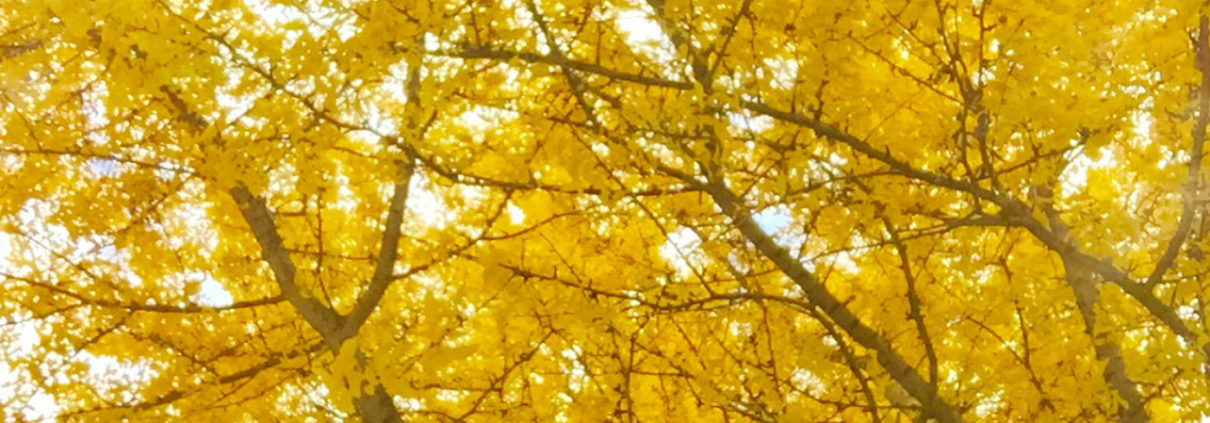Autumn Tree Care
Autumn Tree Care
October heralds the full-fledged transition to autumn and, for most of us in the Northern Hemisphere, this season is characterized by cooler temperatures, changing leaf color and distinctly shorter days. With this seasonal shift, trees shed their summer foliage in preparation for the cold winter ahead. For homeowners, the more temperate weather makes yard work, gardening, and even pruning a more pleasant prospect. To ensure that the trees in your yard remain happy and healthy throughout the fall and into the next growing season, there are a few important things to remember.
Practice Good Tree Care
As the hot, dry summer months have come to a close, many trees have been impacted by the summer’s lack of essential soil moisture. A lack of soil moisture at any time during the growing season can have a lasting effect on a tree’s overall health. While trees typically do not require supplemental water late in the year, it is important to address any environmental stress that occurred during the growing season. Any environmental stress can impact a tree’s potential health in future growing seasons. While the tree’s canopy is dormant in fall and winter, resources are directed to root development. Fertilizing your trees during the dormant season provides your trees with supplemental soil nutrients, improves vigor and encourages a healthy response to challenging environmental conditions, such as drought or depleted soil. A tree is only as healthy as its root system, thus a vibrant soil environment is vital to root function and helps to fortify trees against disease, pests, and ecological stressors.
Additional root-enhancing services include mulching your trees, applying growth regulator treatments, and performing soil remediation practices such as air-tilling, vertical trenching, and radial mulching. These are all highly specialized services to address root and soil issues. Talk to your arborist about them and stay tuned for a future blog dedicated to this category of tree care.
Watch for Fungi
Many trees are susceptible to highly injurious root rot diseases. These are typically fungal in nature and can rarely be treated. Root rot diseases can persist unseen, causing damage to the structural and feeder roots of a tree before becoming evident above ground in the form of a “mushroom” or fruiting body on the trunk flare or buttress roots. This fall in the Bluegrass Region of Kentucky, we have seen an inordinate amount of root rot fungi manifesting as fruiting bodies on trees. Some of the characteristic “mushrooms” take the shape of a shelf fungi while others appear more like giant marshmallows. It is critical that an arborist trained in Tree Risk Assessment evaluate any tree exhibiting symptoms of fungal infection. By the time the fungus can be seen above ground, extensive damage has likely occurred beneath the soil and the root system may be at risk to fail. Only a qualified professional can make this diagnosis. Town Branch Tree Experts, Inc. staff includes three ISA Tree Risk Assessment Qualified (TRAQ) arborists as well as multiple, additional ISA Certified Arborists who can identify pathogens and call for a risk assessment. The first question we ask when assessing a tree’s risk: What will it land on if it fails? This simple question is always critical, even for homeowners, when addressing potential concerns.
Be Smart About Tree Pruning
Just because October is a more pleasant time to work outside doesn’t mean it’s good time to prune your trees. The cooler daytime temperatures may prompt the urge to start trimming your trees back, but we suggest you resist that urge. Tree and shrub pruning can be performed at any time of the year but substantial reductions in canopy volume, over 20%, should only be done during the dormant season and undertaken with care and planning, generally to accomplish a very specific objective. Reductions greater than 20% can be permanently damaging to the overall health of a tree or shrub. Complex pruning should really be left to professionals as we may take a different approach than a homeowner. Pruning of dead, diseased, broken or interfering branches are fair game for homeowners, though, as long as doing so is safe (i.e., if a ladder is involved, it is not safe; chainsaws always require proper use of protective equipment, PPE). Cosmetic pruning is generally best done in the spring when the tree begins to leaf out again. Remember, the branches won’t be growing between now and mid to late March. For strictly aesthetic pruning, be patient. Spring will be here before we know it!
Consult the Experts
We don’t expect you to be an expert on trees and you shouldn’t expect it of yourself either. ISA Certified Arborists and tree care professionals make trees their life’s work. They should be your go-to experts for all aspects of tree maintenance. Arborists offer insights into fungi and pest treatment, soil care, watering regimens, and both necessary and cosmetic pruning. The team at Town Branch Tree Experts, led by an ISA Board Certified Master Arborist (our industry’s highest credential), includes five ISA Certified Arborists and multiple other professional tree care specialists. Our standards dictate specific tools, techniques, and methods to ensure proper treatment and performance of our services. As always, we recommend consulting an arborist anytime that tree care is potentially hazardous or requires specialized equipment. After all, incorrect or poor pruning can cause lasting damage to your trees, or yourself– make sure that it’s done right the first time!
There’s a lot that a well-informed and handy homeowner can do to safeguard his or her trees, but if you need expert knowledge or skill, be sure to reach out to Town Branch Tree Experts, Inc.!



